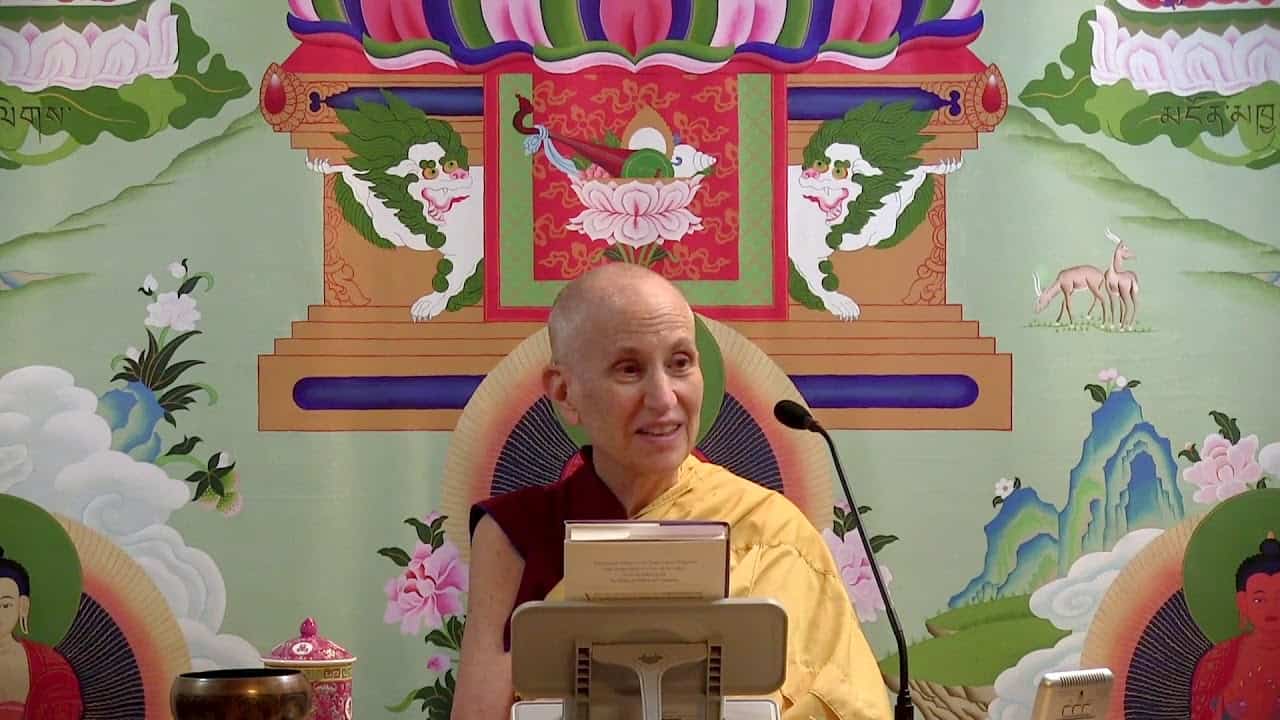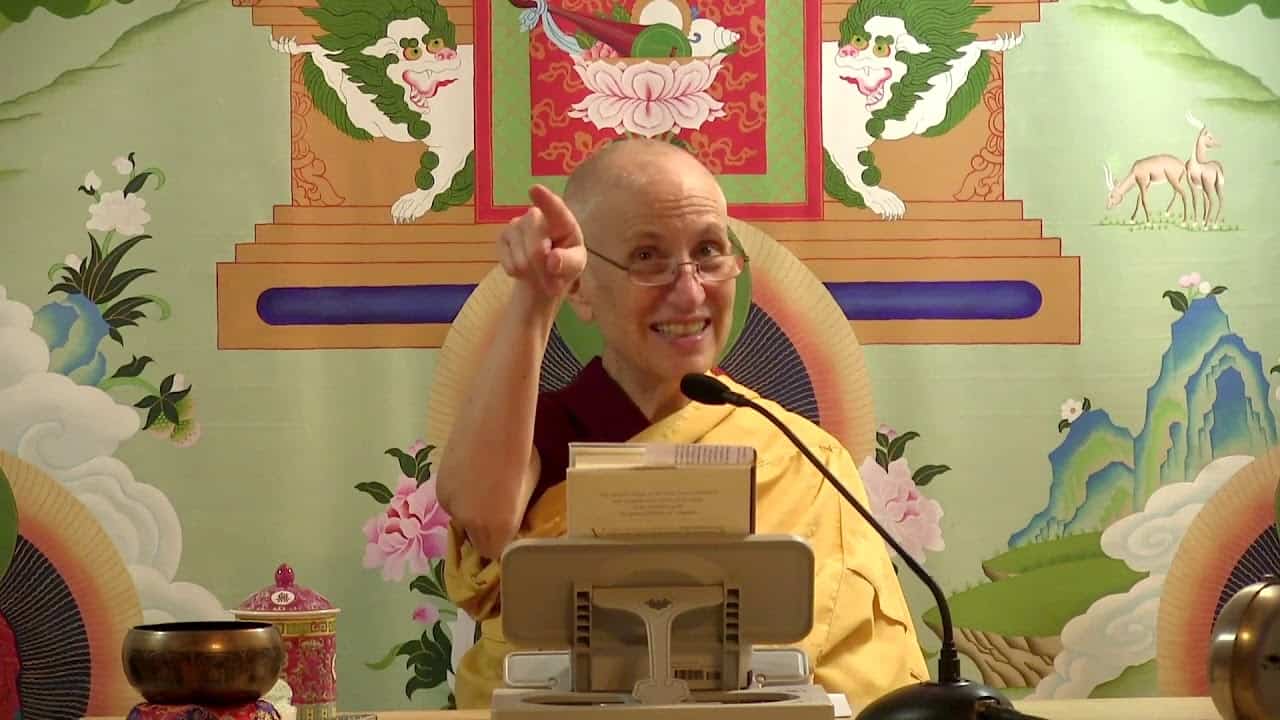Sentience, mind, and brain
34 The Foundation of Buddhist Practice
Part of an ongoing series of teachings (retreat and Friday) based on the book The Foundation of Buddhist Practice, second volume in “The Library of Wisdom and Compassion” series by His Holiness the Dalai Lama and Venerable Thubten Chodron.
- Meditation on six disadvantages of samsara, and applying emptiness
- Nature of the mind is clarity and cognizance
- Different meanings of the word “clarity”
- Explanation of cognition
- What is a sentient being and what is not
- Relationship between mind and brain
- Differences between mind and brain
- Various types or levels of mind
- What happens to brain and mind after death
- Pitfalls of attributing physical or mental disorder to only physiological conditions
The Foundation of Buddhist Practice 34: Sentience, Mind and Brain (download)
Contemplation points
- What is the mind? What are its two characteristics?
- What differentiates a sentient being from that which is not a sentient being?
- How do the body and mind influence each other? Make some examples?
- What are some differences between Science and Buddhism? What are some similarities?
Venerable Thubten Chodron
Venerable Chodron emphasizes the practical application of Buddha’s teachings in our daily lives and is especially skilled at explaining them in ways easily understood and practiced by Westerners. She is well known for her warm, humorous, and lucid teachings. She was ordained as a Buddhist nun in 1977 by Kyabje Ling Rinpoche in Dharamsala, India, and in 1986 she received bhikshuni (full) ordination in Taiwan. Read her full bio.


